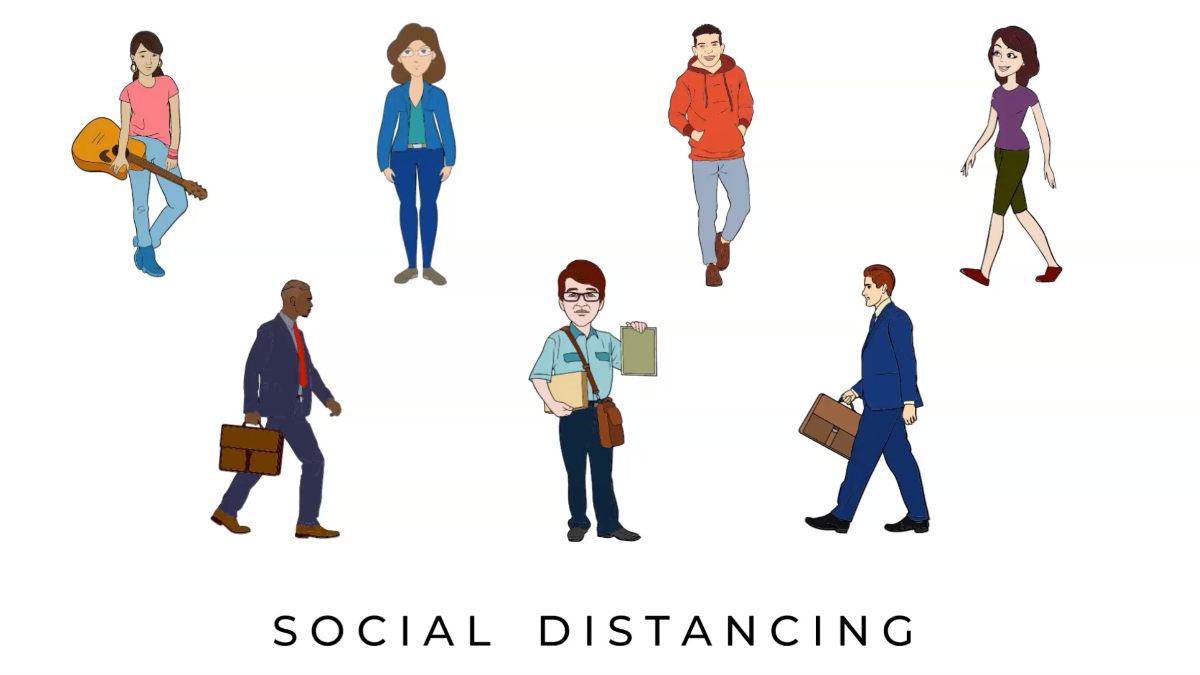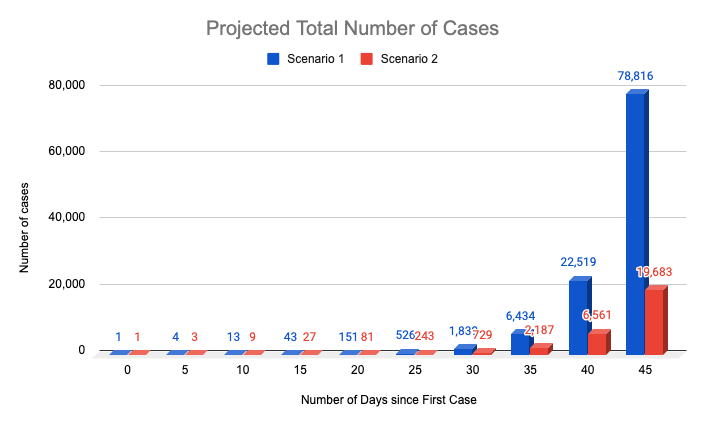
Social distancing is the best thing we can do right now as a community and society to slow the spread of this virus.
All events should be postponed or cancelled. The CDC has recommended no gatherings for parties of 50 or more, but we would recommend to hold off on any and all gatherings at this time that are not essential. If you have to hold any event or gathering, social distancing rules of 6-ft applies. There are a lot of infected cases with minimal or no symptoms, especially in younger adults, who can then become silent spreaders of the virus to our more vulnerable neighbors and family members.
Data from China and South Korea have shown that one infected person can infect about 3.5 other persons around them on average.
The incubation period is about 5 days, and can be as long as 14 days. Findings around the world have been that about 80% of the cases are mild that requires no treatment other than home care. However, despite getting better, an infected person can spread the virus in droplets for about 14 days afterwards, and up to 21 days in some cases. About 14% of the cases are moderately ill cases that will require hospitalization, and 3.4% will die from the infection if the spread is not expeditiously contained.
To put this in perspective, please see below the first scenario:
| Days | Average | Mild | Hospitalized | Critically ill | Mortality |
| 0 | 1 | 1 | 0 | 0 | 0 |
| 5 | 3.5 | 3 | 0 | 0 | 0 |
| 10 | 12 | 10 | 2 | 1 | 0 |
| 15 | 43 | 34 | 6 | 3 | 1 |
| 20 | 150 | 120 | 21 | 9 | 5 |
| 25 | 525 | 420 | 74 | 32 | 18 |
| 30 | 1,838 | 1,471 | 257 | 110 | 63 |
| 35 | 6,434 | 5,147 | 901 | 386 | 219 |
| 40 | 22,519 | 18,015 | 3,153 | 1,351 | 766 |
| 45 | 78,816 | 63,053 | 11,034 | 4,729 | 2,680 |
By staying home so you do not get and help spread the virus, and self-quarantining for 14 days if you are mildly ill from this, you can help limit the spread of the virus significantly.
So, with all of us pitching in social distancing, the rate of spread of the virus is now down to 3, which brings us to scenario 2. You have helped reducing the death rate by 75%, yet we will still be having over 600 deaths in the community in the next 6 weeks!
| Days | Average | Mild | Hospitalized | Critically ill | Mortality |
| 0 | 1 | 1 | 0 | 0 | 0 |
| 5 | 3 | 2 | 0 | 0 | 0 |
| 10 | 9 | 7 | 1 | 1 | 0 |
| 15 | 27 | 22 | 4 | 2 | 1 |
| 20 | 81 | 65 | 11 | 5 | 3 |
| 25 | 243 | 194 | 34 | 15 | 8 |
| 30 | 729 | 583 | 102 | 44 | 25 |
| 35 | 2,187 | 1,750 | 306 | 131 | 74 |
| 40 | 6,561 | 5,249 | 919 | 394 | 223 |
| 45 | 19,683 | 15,746 | 2,756 | 1,181 | 669 |
We have made a difference, but we need to, and can do better.

With this rate of spread, it is of no wonder that communities start to panic at about the 20-day mark, as is the case for Italy when it issued a nationwide lockdown. Los Angeles instituted its lock down at just day 10 of its first known community spread, with its cases at 292. Without widespread testing, the case number is most likely 5 times that, as 80% of those infected have no symptoms. So 292 cases x 5 = 1,460 cases, which put it at about day 28. That means that for about 2 weeks before its first known case, the virus was spreading in the community completely undetected, and some of the deceased were attributed to other causes, such as the case in Seattle, Washington.
As of March 20, the Austin metro has reported about 50 cases, which, when multipled by 5 at 250, put the region at day 21-22. But the first case was just reported a week earlier on March 13. So as is the case in Los Angeles, and elsewhere in the world, the virus has been spreading in the community completely undetected for about 2 weeks prior to the first case.
Knowing this, the South Koreans were swift and widespread in testing and quarantining, and the reported death rate for South Korea is 0.7%. Before we celebrate, let’s not forget that the mortality rate for the seasonal flu is 0.1%, and an estimated 34,200 Americans died from the flu in the 2018-2019 season. In the best case scenario, this is still at least 7 times more serious than the flu. We are past the point of containment due to severe lack of tests, and it is all about mitigating the effect at this time.
In 1918, the Spanish hit the United States hard. St. Louis applied social distancing early, while Philadelphia did not do so until 2 weeks after the first cases. The number of cases and mortality were vastly different with the 3rd and 4th most populous cities in the United States at the time. It was devastating for Philadelphia. Let us not make the same mistakes. We must stay home, and the time to pause all non-essential activities is now, not at day 30. The battle against this virus will not be won at the clinics, emergency rooms, or hospitals. It will be won and lost in the community, and the communities that practice social distancing and do so for the longest will emerge least affected by this outbreak. This outbreak is projected to last at least until late summer, as projected here for the Austin area. Please wash your hands often, wear a mask, and practice social distancing for the foreseeable future. Handshakes and elbow bump might have to wait, as Dr. Fauci recommended.






